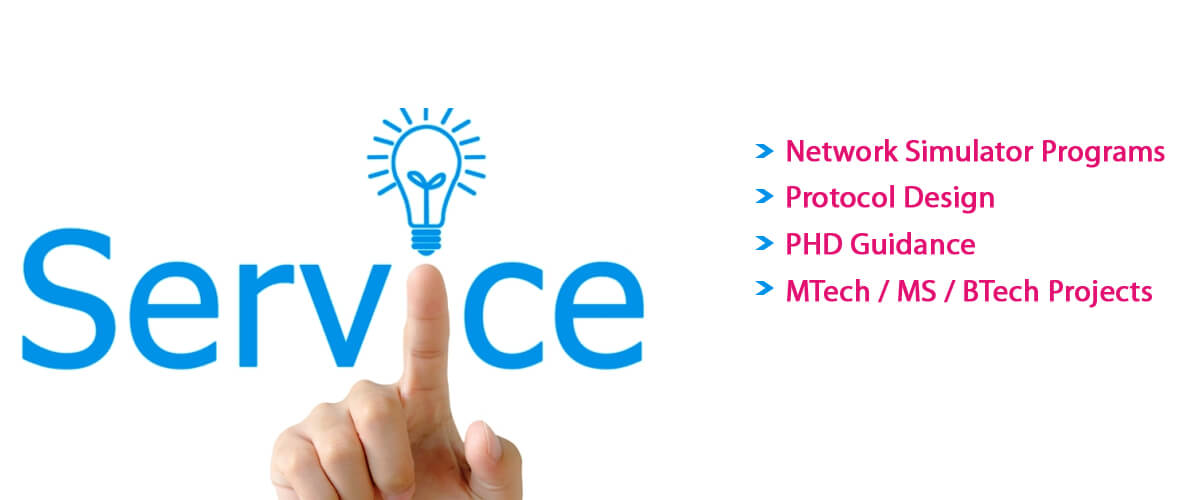5G Research Projects
5G Research Project Problems with proposed solutions contact us for best tailored results we will provide you fresh project ideas and topics. Our domain professionals, who are masters in their respective fields, will help craft a high-quality research paper. In the domain of 5G, several problems exist, which should be solved in an efficient and appropriate manner. Related to the 5G research project, we list out some potential issues. To solve these issues, effective solutions are also recommended by us:
Problem 1: Network Slicing Optimization
Issue: On a distributed physical infrastructure, several virtual networks can be developed by means of network slicing. For particular needs, each virtual network could be appropriate. But, it is difficult to assure isolation among slices and enhance resource allocation.
Solution:
- Dynamic Resource Allocation Algorithm: An algorithm has to be created and applied, which considers actual-time traffic needs and QoS specifications to allocate resources to network slices in a dynamic manner.
- Tools: Kubernetes, Python, and NS-3.
- Implementation Procedures:
- Simulation Arrangement: Including several slices, a 5G network has to be simulated with the aid of NS-3.
- Algorithm Creation: To fulfill the QoS requirements of every slice, a dynamic resource allocation algorithm must be applied, which is capable of observing traffic and reassigning resources.
- Performance Assessment: Across diverse traffic contexts, we plan to examine the algorithm. Various metrics like slice isolation, latency, and throughput have to be evaluated.
Problem 2: Massive MIMO Interference Management
Issue: To enhance spectral effectiveness and capability, a wide range of antennas is utilized by Massive MIMO (Multiple Input Multiple Output) frameworks. Among the antennas, the process of handling intervention is challenging.
Solution:
- Beamforming Techniques: In addition to reducing intervention with other users, signals have to be guided for aimed receivers. To attain this mission, innovative beamforming methods must be utilized.
- Tools: Python and MATLAB
- Implementation Procedures:
- Channel Modeling: By means of MATLAB, the MIMO channel platform should be designed.
- Beamforming Algorithm: Diverse beamforming algorithms have to be created and applied. It could encompass Minimum Mean Square Error (MMSE) and Zero-Forcing (ZF).
- Simulation and Assessment: In enhancing framework capability and minimizing intervention, the efficiency of the beamforming methods has to be assessed by simulating various contexts.
Problem 3: Latency Reduction in URLLC Applications
Issue: For applications such as industrial automation and autonomous driving, extensive reliability and less latency are needed by Ultra-Reliable Low-Latency Communication (URLLC). In a dynamic network platform, it is complicated to accomplish this objective.
Solution:
- Low-Latency Scheduling Algorithm: A Scheduling algorithm has to be created, which assures greater reliability and less latency by selecting URLLC traffic.
- Tools: Python and NS-3.
- Implementation Procedures:
- Traffic Modeling: In a 5G network, design various kinds of traffic like URLLC and others by utilizing NS-3.
- Algorithm Creation: To select URLLC packets in a dynamic manner, we intend to apply a suitable scheduling algorithm.
- Performance Assessment: Different network states have to be simulated. Then, consider URLLC traffic and assess its reliability and latency.
Problem 4: Energy Efficiency in 5G Networks
Issue: 5G networks generally cause greater energy usage because of enabling a large amount of devices. However, the process of minimizing energy utilization is a key problem, especially while preserving functionality.
Solution:
- Energy-Efficient Protocols: In 5G networks, plan to refine energy consumption by creating efficient algorithms and protocols.
- Tools: Python, MATLAB, and NS-3.
- Implementation Procedures:
- Energy Consumption Modeling: Focus on various network elements and design their energy usage.
- Algorithm Creation: For scheduling, power handling, and resource allocation, the energy-effective algorithms must be applied.
- Simulation and Assessment: The algorithms should be simulated properly. On network functionality and energy usage, their effect has to be evaluated.
Problem 5: Security and Privacy in 5G Networks
Issue: Novel safety and confidentiality issues are presented through 5G networks due to their heterogeneity and higher intricacy. It could involve guaranteeing data confidentiality and securing from cyber-assaults.
Solution:
- Blockchain-Based Security: In 5G networks, improve data confidentiality and morality through employing a blockchain-related security technology.
- Tools: Python, Ethereum, and Hyperledger.
- Implementation Procedures:
- Blockchain Arrangement: Including Ethereum or Hyperledger, a blockchain network has to be configured.
- Smart Contract Creation: For authentication, safer interaction, and data morality, the smart contracts must be created.
- Integration and Assessment: With a simulated 5G network, the blockchain approach should be combined. In assuring data confidentiality and obstructing assaults, examine its efficiency.
Problem 6: Scalability of 5G IoT Networks
Issue: In addition to preserving credibility and functionality, a wide range of IoT devices have to be enabled in 5G networks. When considering the diverse nature of IoT devices and applications, achieving this objective is difficult.
Solution:
- Hierarchical Network Architecture: For minimizing the load on the core network, a hierarchical framework must be created, in which the IoT devices are classified into various categories that are handled by edge nodes
- Tools: Python, EdgeX Foundry, and NS-3.
- Implementation Procedures:
- Network Design: A hierarchical network system should be modeled, where the categories of IoT devices are handled by edge nodes.
- Protocol Creation: Among categories and the core network, facilitate effective data aggregation and transmission by creating robust communication protocols.
- Simulation and Assessment: Plan to assess the credibility, scalability, and functionality of the network by simulating it.
Problem 7: Integration of Edge Computing with 5G
Issue: Data can be processed nearer to the source by combining edge computing with 5G networks. This approach can minimize latency in a substantial manner. On the basis of application placement and resource handling, it causes various problems.
Solution:
- Edge Resource Management: In edge computing platforms, support task scheduling and effective resource allocation through creating algorithms.
- Tools: NS-3, Docker, Kubernetes, and EdgeX Foundry.
- Implementation Procedures:
- Edge Node Placement: By means of EdgeX Foundry, edge nodes have to be arranged. With a 5G core network, these nodes must be combined.
- Algorithm Creation: For task scheduling and resource handling, we aim to apply algorithms.
- Performance Assessment: Actual-time applications should be simulated. It is important to evaluate resource usage and latency minimization.
Problem 8: Backhaul Network Optimization
Issue: The backhaul network can impact the entire functionality in 5G networks and turned out to be a barrier because of linking the RAN to the core network.
Solution:
- Optimized Routing Protocols: To enhance data transmission effectiveness, the improved routing protocols have to be created and applied for backhaul networks.
- Tools: Python, MATLAB, and NS-3.
- Implementation Procedures:
- Backhaul Network Modeling: The backhaul network topology must be designed by means of NS-3.
- Routing Algorithm Creation: To minimize congestion and enhance data routes, apply efficient routing algorithms.
- Simulation and Assessment: In the backhaul network, assess the performance enhancements by simulating diverse traffic contexts.
What are the important research issues in 5g network?
Relevant to implementation, energy efficacy, security, and functionality, several problems are confronted by 5G networks. Including suggested solutions, we specify 15 research issues in 5G networks, which are considered as highly significant:
15 Research Issues with Solutions in 5G Networks
- Ultra-Reliable Low Latency Communication (URLLC) Optimization
- Issue: For major applications like remote surgery and self-driving vehicles, it is difficult to accomplish greater reliability (99.999%) and very less latency (<1 ms).
- Potential Solution: In order to minimize latency, the AI-based resource allocation and edge computing must be applied. For reliability, it is approachable to utilize hybrid Automatic Repeat reQuest (HARQ) technologies.
- Massive MIMO Beamforming Complexity
- Issue: Specifically for beamforming and channel assessment, higher computational intricacy is needed by massive MIMO.
- Potential Solution: To minimize processing overhead, we intend to create hybrid analog-digital beamforming and deep learning-related beamforming algorithms.
- Interference Management in Dense Networks
- Issue: Functionality could be reduced in ultra-dense networks (UDN) due to the intervention among macro cells and small cells.
- Potential Solution: Interference coordination methods have to be employed. It could encompass AI-based power control, self-organizing networks (SON), and coordinated multipoint (CoMP).
- Security Threats in 5G Networks
- Issue: When considering network slicing and virtualization, the 5G is susceptible to various assaults. Some of the potential assaults are DDoS, man-in-the-middle (MITM), and jamming.
- Potential Solution: In network slices, we aim to improve security by utilizing AI-based anomaly detection and blockchain-related security techniques.
- Energy Efficiency in 5G Base Stations
- Issue: Ecological issues and operational expenses could be resulted in 5G base stations because of greater usage of energy.
- Potential Solution: For base stations, sleep mode algorithms and energy-sensitive scheduling should be applied. To refine power utilization, make use of AI approaches.
- Handover Optimization in 5G Mobility
- Issue: Higher latency and packet loss could be produced in high-speed mobility contexts (such as UAVs, trains) due to recurrent handovers.
- Potential Solution: To forecast mobility patterns, the predictive handover methods have to be utilized, which are related to reinforcement learning and machine learning.
- Network Slicing Resource Allocation
- Issue: In network slicing, it is complicated to handle resources in an effective manner, especially for various QoS needs fulfillment.
- Potential Solution: Dynamic resource allocation systems must be created relevant to AI, which consider actual-time traffic to improve slice provisioning.
- 5G and IoT Device Authentication
- Issue: With 5G networks, a wide range of IoT devices are linked. Through this, authentication costs could be maximized.
- Potential Solution: To improve security in addition to minimizing computational overhead, the lightweight blockchain-related authentication systems have to be employed.
- Spectrum Scarcity and Utilization
- Issue: In 5G, ineffectiveness and congestion issues are presented because the spectrum requirement surpasses accessibility
- Potential Solution: By means of cognitive radio methods and AI-related spectrum sensing, apply dynamic spectrum distribution.
- Latency in Cloud-Based 5G Networks
- Issue: In terms of data processing and routing delays, supplementary latency is presented by cloud-related 5G core networks.
- Potential Solution: To minimize round-trip latency and process data nearer to the end-user, we plan to implement Mobile Edge Computing (MEC).
- High Energy Consumption in 5G IoT Devices
- Issue: Particularly in 5G networks, greater power usage is caused by battery-driven IoT devices.
- Potential Solution: As a means to enhance battery durability, apply energy harvesting and wake-up radio (WuR) methods.
- Load Balancing in 5G Network Traffic
- Issue: Diminished functionality and network congestion are presented through irregular traffic load distribution.
- Potential Solution: For effective network usage, the AI-related traffic load balancing methods have to be applied with software-defined networking (SDN).
- Delay in 5G Backhaul Networks
- Issue: In end-to-end interaction, latency and jitter could be caused by extensive traffic in the backhaul network.
- Potential Solution: Integrating with SDN-related backhaul traffic handling, we intend to utilize millimeter-wave (mmWave) and optical fiber mechanisms.
- Network Privacy Issues in 5G
- Issue: The 5G is highly dependent on virtualization and cloud computing, which could cause confidentiality violations.
- Potential Solution: For safer data processing, aim to apply homomorphic encryption and differential privacy approaches.
- 5G for Remote and Rural Areas
- Issue: In remote regions, the process of implementing a 5G system is ineffective and requires more cost.
- Potential Solution: To offer connectivity in remote areas, plan to utilize Non-Terrestrial Networks (NTN) like drones (HAPs) and LEO satellites.
Emphasizing the domain of 5G, we specified numerous important issues, including innovative solutions. In addition to that, some major research issues are listed out by us, along with solutions that can assist you to solve them efficiently.
5G Research Projects
5G Research Project Topics & Ideas aligned with the most relevant keywords are mentioned below, we have worked on all of it . Get your work done with clarity, precision, and customization to meet your specific needs. Chat with us to discover the best project ideas and topics that align perfectly with your expectations.
- Verifiable public key encryption scheme with equality test in 5G networks
- Tracking area update and paging in 5G networks: A survey of problems and solutions
- Massive IoT access with NOMA in 5G networks and beyond using online competitiveness and learning
- Performance evaluation and comparison of scheduling algorithms on 5G networks using network simulator
- Modeling and throughput analysis of an ADO-OFDM based relay-assisted VLC system for 5G networks
- MoRoot cause analysis based on temporal analysis of metrics toward self-organizing 5G networks
- SDN‐based 5G mobile networks: architecture, functions, procedures and backward compatibility
- Simulated annealing for resource allocation in downlink NOMA systems in 5G networks
- Optimal-capacity, shortest path routing in self-organizing 5G networks using machine learning
- Data authentication and anonymization in IoT scenarios and future 5G networks using chaotic digital watermarking
- Advances in mobile computing and communications: perspectives and emerging trends in 5G networks
- Resource allocation in sparse code multiple access‐based systems for cloud‐radio access network in 5G networks
- A survey of 5G technologies: regulatory, standardization and industrial perspectives
- A fuzzy-based optimization technique for the energy and spectrum efficiencies trade-off in cognitive radio-enabled 5G network
- Improving energy efficiency and scalability for IoT communications in 5G networks
- Emerging technologies and research challenges for 5G wireless networks
- Design and analysis of in-band full-duplex private 5G networks using FR2 band
- A flexible approach to combating chromatic dispersion in a centralized 5G network
- A framework for 5G networks with in-band full-duplex enabled drone-mounted base-stations
- Fulfillment of service level agreements via slice-aware radio resource management in 5G networks







